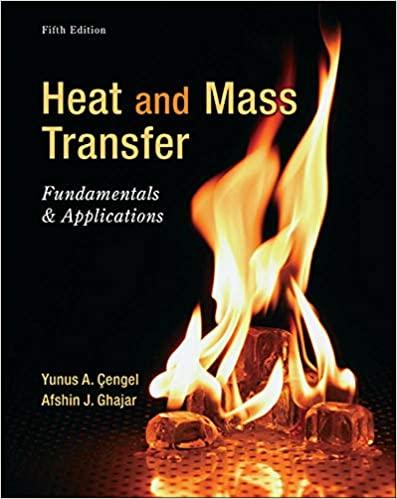The outer surface of an engine is situated in a place where oil leakage can occur. When
Question:
The outer surface of an engine is situated in a place where oil leakage can occur. When leaked oil comes in contact with a hot surface that has a temperature above its autoignition temperature, the oil can ignite spontaneously. Consider an engine cover that is made of a stainless steel plate with a thickness of 1 cm and a thermal conductivity of 14 W/m ∙ K. The inner surface of the engine cover is exposed to hot air with a convection heat transfer coefficient of 7 W/m2 · K at a temperature of 333°C. The engine outer surface is cooled by air blowing in parallel over the 2-m-long surface at 7.1 m/s, in an environment where the ambient air is at 60°C. To prevent fire hazard in the event of oil leak on the engine cover, a layer of thermal barrier coating (TBC) with a thermal conductivity of 1.1 W/m? K is applied on the engine cover outer surface. Would a TBC layer with a thickness of 4 mm in conjunction with 7.1 m/s air cooling be sufficient to keep the engine cover surface from going above 1808C to prevent fire hazard? Evaluate the air properties at 120°C.
Step by Step Answer:

Heat And Mass Transfer Fundamentals And Applications
ISBN: 9780073398181
5th Edition
Authors: Yunus Cengel, Afshin Ghajar





